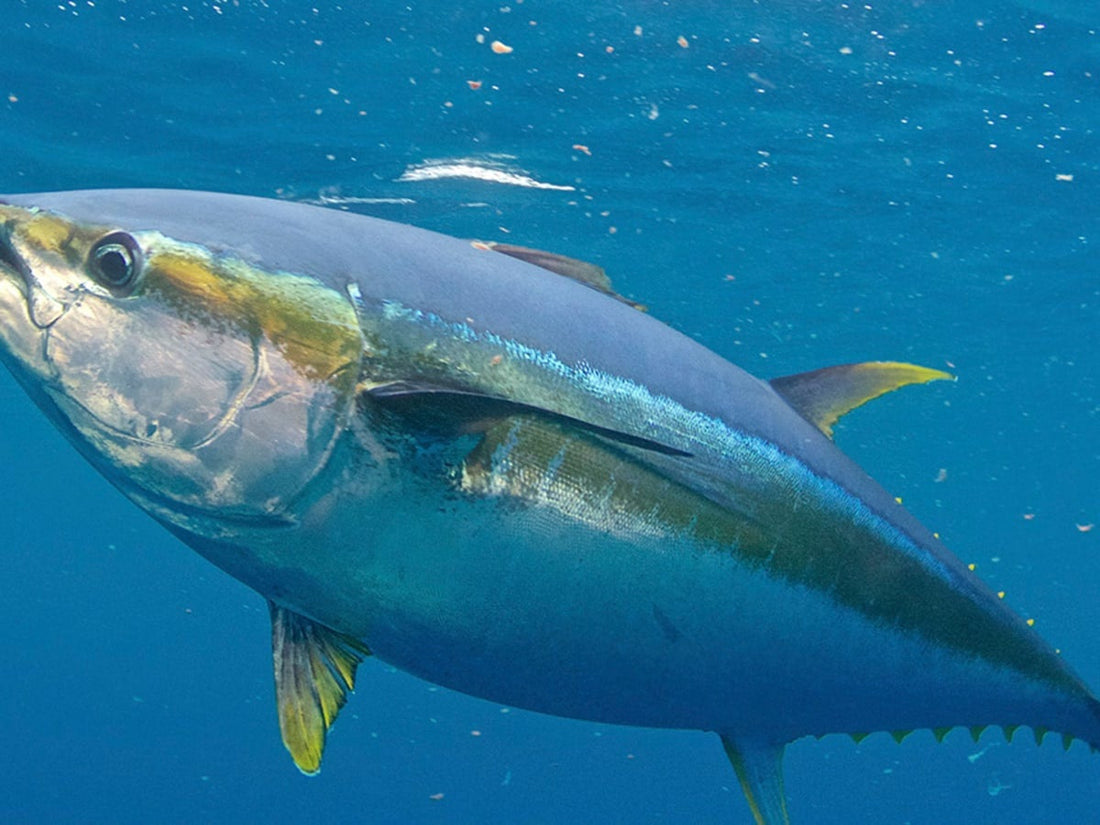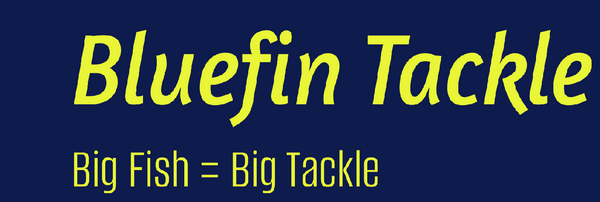
Fishing for Yellowfin Tuna: A Complete Guide
Share
Fishing for Yellowfin Tuna: A Complete Guide
Yellowfin tuna (Thunnus albacares) is one of the most sought-after game fish in the world. Known for their speed, strength, and delicious meat, these powerful predators can be found in tropical and subtropical waters across the globe. Fishing for yellowfin tuna requires the right techniques, equipment, and knowledge of their behavior. In this comprehensive guide, we will explore the best methods, gear, locations, and tips to help you successfully catch yellowfin tuna.
Understanding Yellowfin Tuna
Yellowfin tuna are pelagic fish, meaning they inhabit open ocean waters rather than coastal areas. They are known for their torpedo-shaped bodies, metallic blue backs, and bright yellow dorsal and anal fins. These fish can grow up to 400 pounds, though the average catch typically weighs between 30 and 100 pounds.
Where to Find Yellowfin Tuna
Yellowfin tuna are commonly found in warm waters with temperatures ranging from 65°F to 88°F. Some of the best locations for yellowfin tuna fishing include:
- Gulf of Mexico – Particularly off the coast of Louisiana and Texas
- Pacific Ocean – Areas off California, Mexico, Costa Rica, and Panama
- Atlantic Ocean – Offshore waters from North Carolina to Florida
- Indian Ocean – Waters around Seychelles, Maldives, and Madagascar
Yellowfin tuna often travel in schools and are found near structures such as floating debris, oil rigs, and seamounts. They also follow baitfish schools and can often be located near pods of dolphins, as both species feed on the same prey.
Best Fishing Techniques for Yellowfin Tuna
There are multiple techniques used to catch yellowfin tuna, each with its own advantages depending on conditions and angler preference.
1. Trolling
Trolling is one of the most popular methods for catching yellowfin tuna. It involves dragging artificial lures or rigged bait behind a moving boat at speeds of 6-10 knots. Some of the best lures for trolling include:
- Cedar plugs
- Skirted lures (e.g., jet heads, feather jigs)
- Deep-diving plugs (e.g., Rapala X-Rap Magnum)
Trolling works best when covering large areas in search of tuna schools. Spreader bars and daisy chains can also be used to mimic a school of baitfish, increasing the chances of attracting a strike.
2. Chunking
Chunking is a stationary technique where chunks of bait, usually sardines or butterfish, are thrown into the water to create a chum slick. This method is highly effective at attracting yellowfin tuna when they are feeding near the surface. Anglers drop their baited hooks into the slick and wait for a bite. Using fluorocarbon leaders helps make the bait appear more natural, increasing hook-up rates.
3. Jigging
Vertical jigging involves dropping a metal jig to various depths and retrieving it with a quick, jerking motion. This technique mimics the erratic movements of injured baitfish, enticing aggressive tuna to strike. Heavy-duty spinning or conventional gear is recommended for jigging, as yellowfin tuna put up a strong fight.
4. Live Bait Fishing
Using live bait is one of the most productive ways to catch yellowfin tuna. Popular baitfish include:
- Blue runners
- Mackerel
- Bonito
- Sardines
The best way to rig live bait is with a circle hook and fluorocarbon leader. Slow-trolling or drifting with live bait near tuna schools increases the likelihood of a strike.
5. Popping
Casting large surface poppers is an exciting way to catch yellowfin tuna. This method works best when tuna are actively feeding on the surface. Anglers use heavy spinning rods to cast poppers and retrieve them with aggressive popping motions to create surface disturbances that mimic fleeing baitfish.
Best Gear for Yellowfin Tuna Fishing
Rod and Reel Selection
- Conventional Reels: Penn International, Shimano Tiagra, and Avet reels are excellent choices for trolling and chunking.
- Spinning Reels: Shimano Stella and Daiwa Saltiga are top choices for popping and jigging.
- Rods: Heavy-duty offshore rods such as those made by St. Croix, Shimano, or Penn are recommended.
- Line: Braided line (50-100 lb. test) is preferred for its strength and low stretch, while a fluorocarbon leader (60-150 lb. test) helps reduce visibility.
Hooks and Terminal Tackle
- Circle Hooks: Ideal for live bait fishing, as they increase hook-up rates and reduce gut hooking.
- J-Hooks: Commonly used for chunking and trolling.
- Swivels: Heavy-duty ball-bearing swivels prevent line twist.
- Crimps and Leaders: Fluorocarbon leaders help make bait presentations more natural and increase bite rates.
Best Time to Catch Yellowfin Tuna
While yellowfin tuna can be caught year-round in some locations, the best seasons vary by region:
- Gulf of Mexico: April to October
- California Coast: Summer months (June to September)
- Costa Rica and Panama: December to May
- West Africa: October to March
Fishing during dawn and dusk tends to yield the best results, as tuna are more active during low-light conditions.
Fighting and Landing a Yellowfin Tuna
Once hooked, yellowfin tuna are known for their powerful runs and deep-diving behavior. Here are some tips for successfully landing a tuna:
1. Maintain steady pressure – Keep the line tight to prevent the fish from shaking the hook.
2. Adjust drag accordingly – A properly set drag prevents line breakage while allowing the fish to tire.
3. Use the right technique – Anglers should use a pump-and-reel method to bring the fish to the boat efficiently.
4. Be prepared for multiple runs – Yellowfin often make several strong runs before tiring out.
Safety and Conservation Tips
- Practice catch and release – If you do not intend to keep your catch, release it safely to maintain healthy tuna populations.
- Use barbless hooks – These make releasing fish easier and reduce injury.
- Follow regulations – Always check local fishing regulations regarding size and bag limits to ensure compliance.
- Handle fish with care – If keeping your catch, bleed and ice the fish immediately to preserve meat quality.
Final Thoughts
Fishing for yellowfin tuna is an exciting and rewarding experience that requires skill, patience, and the right equipment. Whether trolling, chunking, jigging, or popping, each technique offers a unique approach to targeting these powerful fish. By understanding their behavior, selecting the appropriate gear, and employing effective fishing methods, anglers can increase their chances of a successful tuna fishing adventure.
With preparation and persistence, you can enjoy the thrill of battling a yellowfin tuna and, if you're lucky, take home some of the finest seafood available. Whether you’re a seasoned angler or a newcomer to offshore fishing, the pursuit of yellowfin tuna is an unforgettable adventure that keeps fishermen coming back for more.
